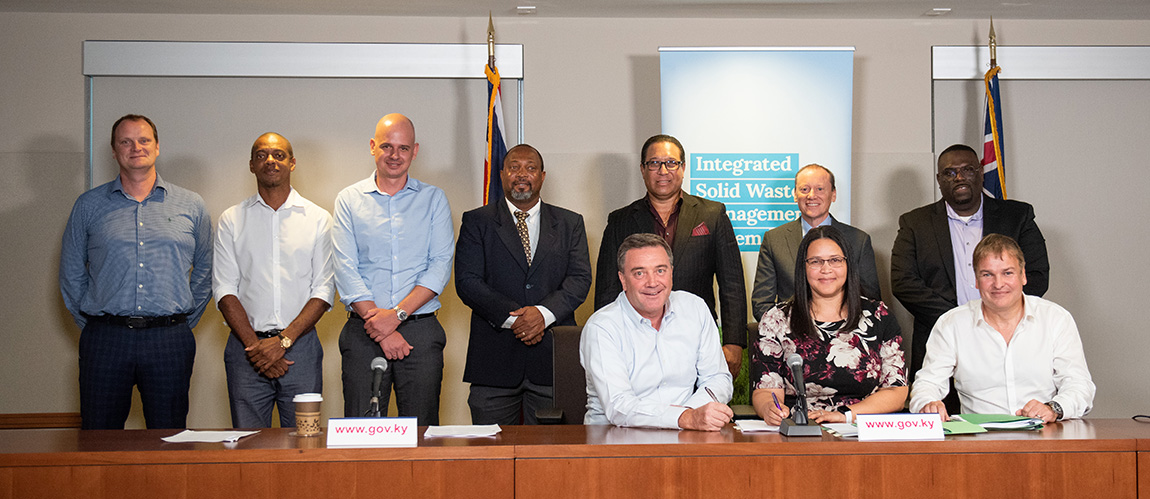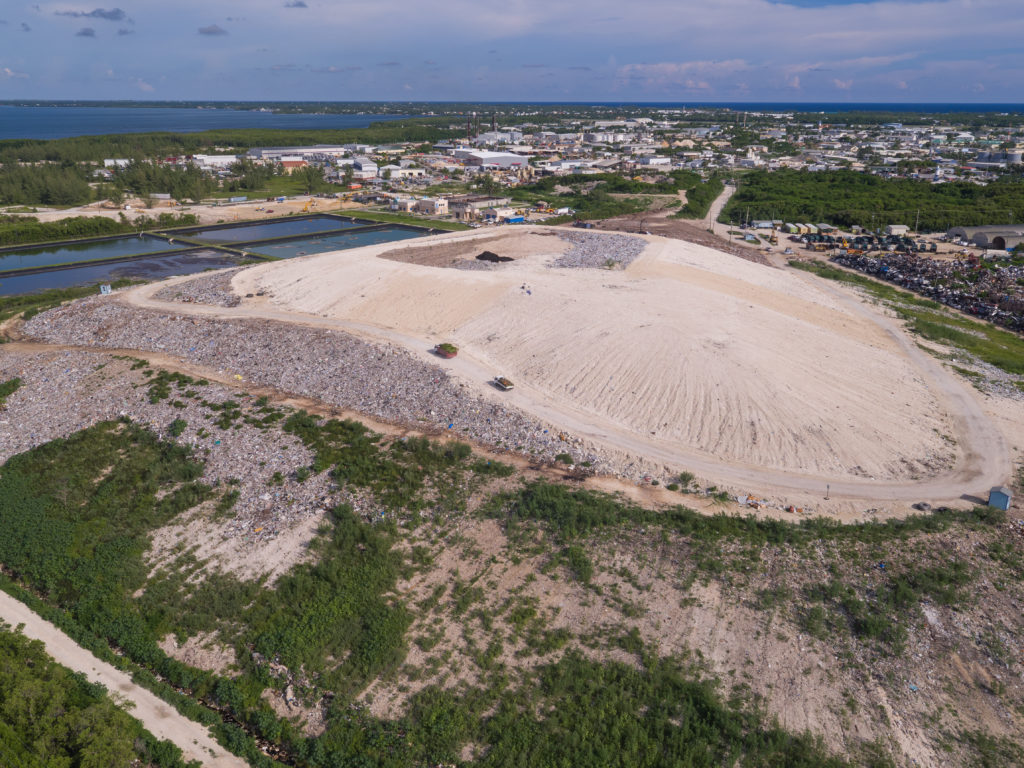
The future of the George Town Landfill looks green after Dart and the Cayman Islands Government signed a number of agreements on Tuesday, 13 October to continue the capping and remediation of the country’s largest landfill.
As the preferred bidder to design, build, finance, operate and maintain the new integrated solid waste management system for the Cayman Islands, Dart is leading a consortium of local and international experts to deliver the Government’s vision for a sustainable solid waste solution.
Premier Alden McLaughlin said the signing represented a significant project milestone while full contract discussions continue and a historic moment for the country. “Shortly after we sign this document for early works on the integrated solid waste management system project we will reach a point where the people of the Cayman Islands can begin to see the realisation of Government’s vision for waste management in the country,” says the premier.
Dart President Development Delivery & Infrastructure Cameron Graham says remediation will have a number of important public and environmental health benefits for the Cayman Islands.
“The ongoing capping has already had a positive effect on the visual and environmental impact of the George Town Landfill,” he says, noting that the initial layer of fill was part of an emergency response to mitigate the risk of landfill fires.
“These agreements allow us to progress full capping and remediation ahead of full contract signing,” says Graham. “We anticipate remediation will be complete by 2022. Once the mound has stabilised sufficiently, walking paths will be installed at the site of the remediated landfill, turning a national eyesore into a public amenity.”
To achieve this green future for the current landfill, remediation includes capping the waste mound and introducing new features to enhance the safety and visual appearance of the site.
The first step in the technical closure of the landfill happened earlier this year. Tipping operations were relocated to a different location within the existing landfill footprint, freeing up the main mound to be capped. The current area being used for interim tipping will also be remediated in the future.
Once the layer of fill material is complete, it will then be covered with a synthetic liner, more fill and, finally, with a layer of topsoil to support the growth of grasses and shrubs that will provide an attractive green surface that is resistant to erosion.
Remediation will also include landfill gas management: A network of collection wells and pipes connected to a gas blower will draw the gas from the waste mound. When the planned waste-to-energy plant is commissioned, the collected landfill gas will be piped to the facility for energy recovery through the waste combustion boiler.
Landfill gas collected while the waste-to-energy facility is under construction will be flared off to destroy odorous or noxious compounds as well as methane, which makes up approximately 50% of landfill gas and is a significant greenhouse gas.
The flare will be located beside the waste mound and stand approximately 10 to 15 feet tall. Landfill gas will be burned within the flare stack to avoid a visible flame and ensure complete combustion.
Throughout the process, safety and efficiency will be ensured by monitoring the landfill cap for gas emissions.

Capping the waste mound will prevent potential vectors for disease – such as rats and flies – from accessing the decomposing waste and will eliminate odour emissions.
By reducing the amount of rainfall infiltration, remediation will reduce the potential for leaching contaminants into the ground below the site.
Once complete, remediation will significantly reduce the risk of fires at the George Town Landfill. By covering exposed garbage and preventing oxygen infiltration, the cap will effectively seal off the surface of the waste mound.
In addition to full remediation of the George Town Landfill, the agreements enable the consortium to progress design details for the project in preparation for an Environmental Impact Assessment (EIA) and submissions to the Planning Department and launch a public education campaign.
